Organizational change by aligning the Five Ps
What are the steps for leading organizational change? First, you define the Core Culture–the Purpose, Philosophy, and Priorities. Then, the next step is alignment. To achieve organizational alignment, the Purpose, Philosophy and Priorities of the organization must be embedded in the Practices and Projections. Organizational change is simplified: to sum it up, just align the Five Ps!
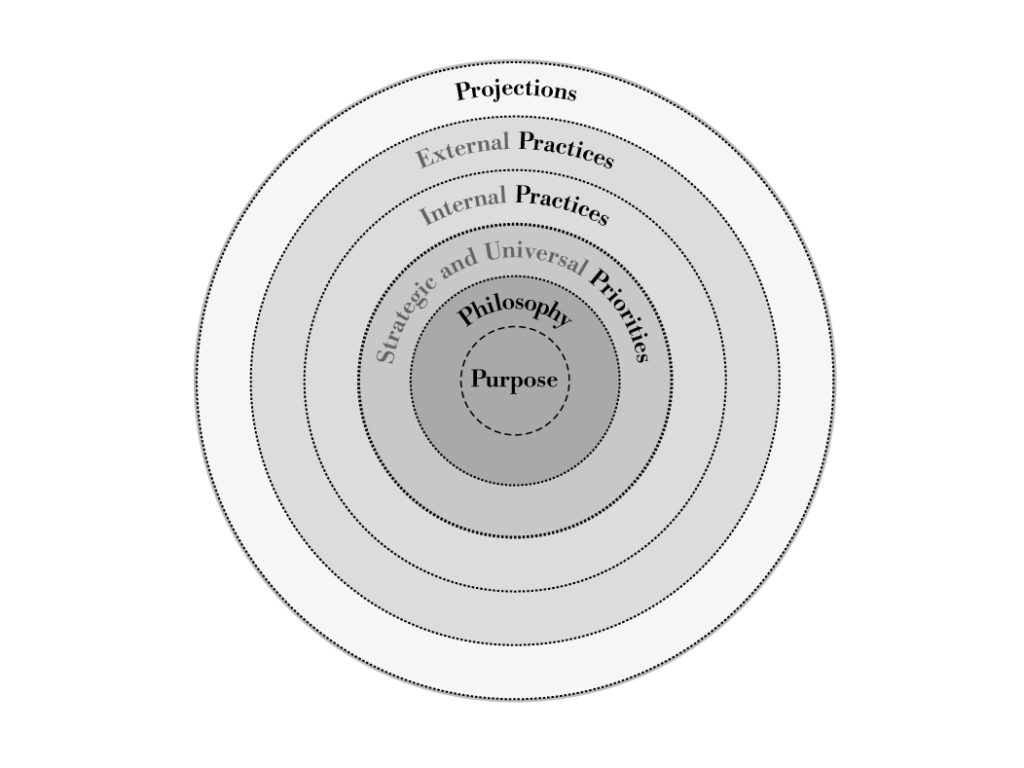
By just defining the Core Culture, you cannot assume that the Core Culture attributes will be transferred from intentions to actions. To clarify, to live the Core Culture, you must align all aspects of the organization with it. The Internal Practices, External Practices and Projections must reflect and support the Core Culture attributes. In short, alignment of the Five Ps is the path to managing organizational change.
Ways to align the Five Ps and drive organizational change
The image below illustrates ways to align the Purpose, Philosophy, and Priorities with the Practices and Projections.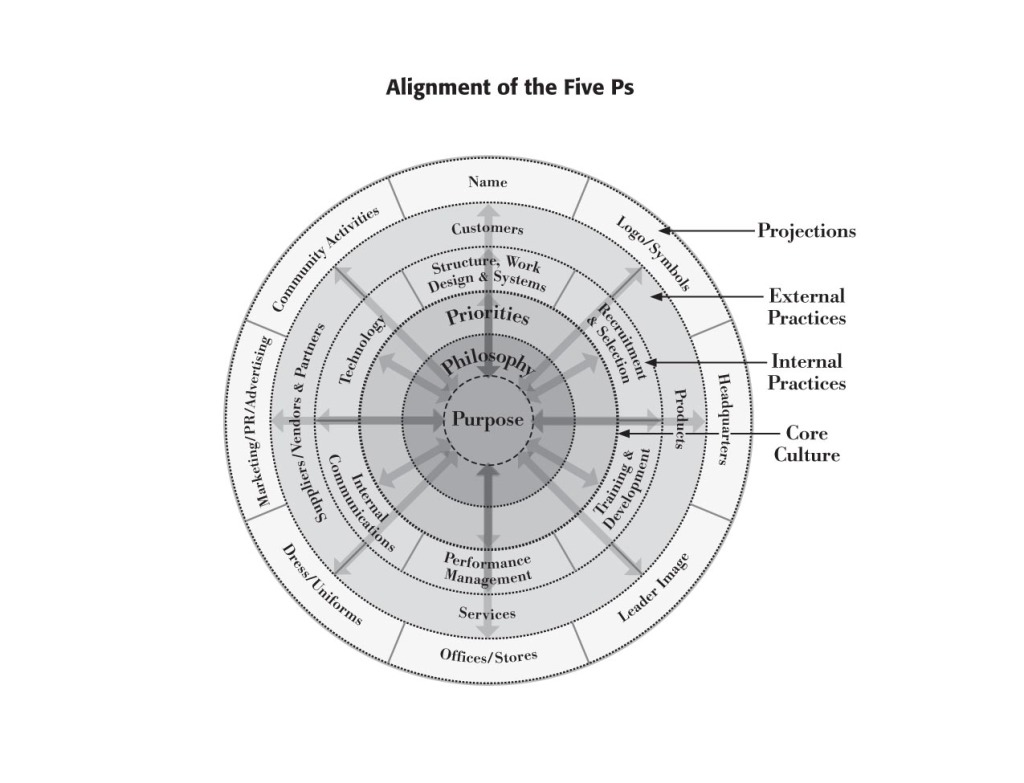
Align Practices with the Core Culture: Internal and External
Internal Practices
Your goal is to align these Internal Practices with the Core Culture. Internal Practices are the inner workings of the organization that affect employee relationships, interactions and accomplishments.Therefore, Internal Practices include:
- your organizational structure
- how work is designed
- systems and processes for doing work
- employee roles
- work habits…that is to say, the daily habits of employees–recurring patterns for behavior
- recruitment and selection
- onboarding, training and development
- performance management
- internal communications
- technology
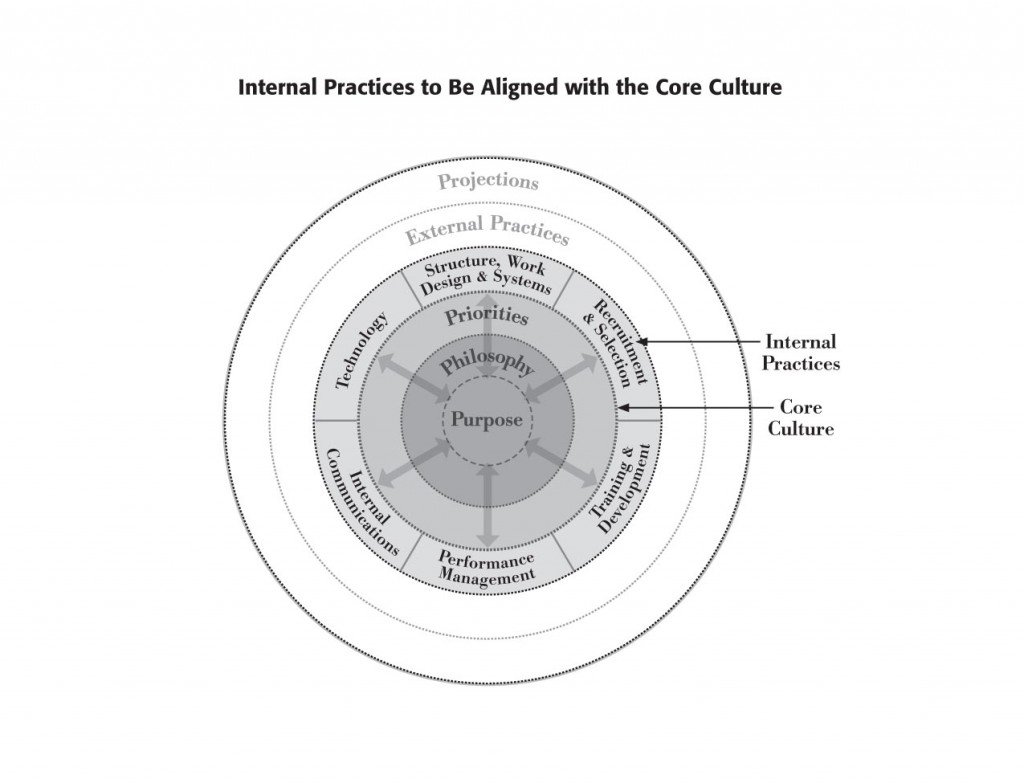
External Practices
External Practices define how the organization interacts with others outside the organization. For example, the External Practices include your customers and markets; the products and/or services you offer; suppliers, vendors and business partners. Your goal is to align these External Practices with the Core Culture.
Align External Practices with the Core Culture
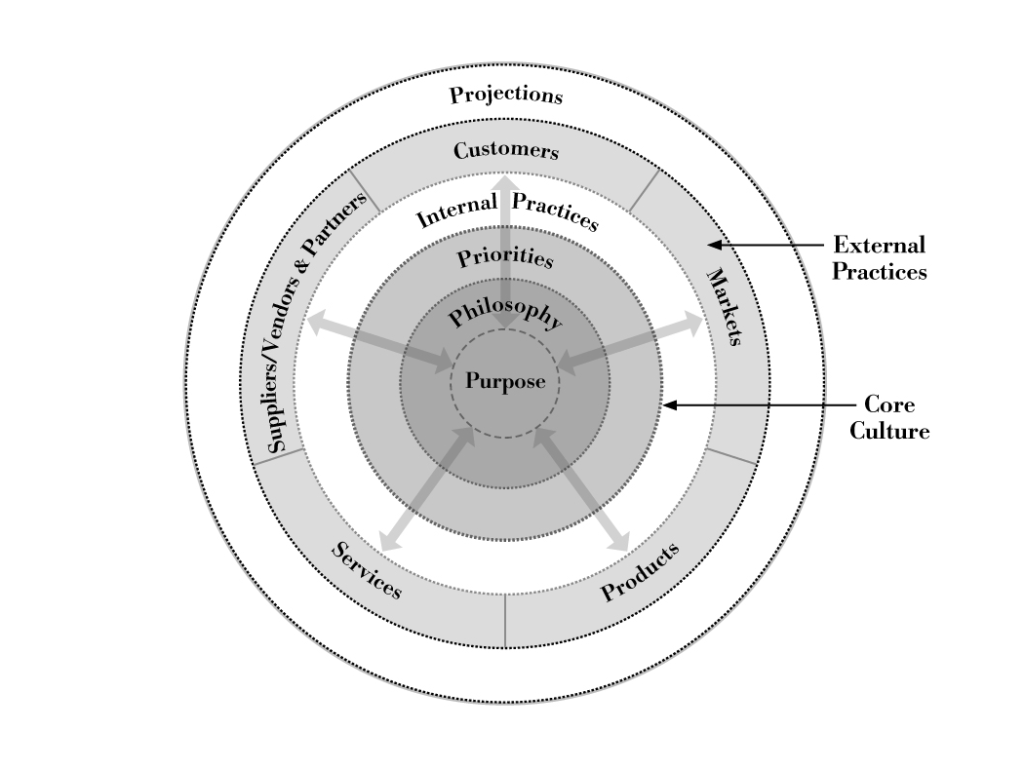
Align Projections with the Core Culture
Your organization’s images should also align with your Core Culture. These activities are the ways your organization paints an image of itself to the public. Therefore, Projections include:
- your organization’s name
- its logo and symbols
- the image of your corporate headquarters
- the image of your leader
- the appearance of your offices and/or stores
- the style of employee dress and uniforms
- your marketing, public relations and advertising
- community activities
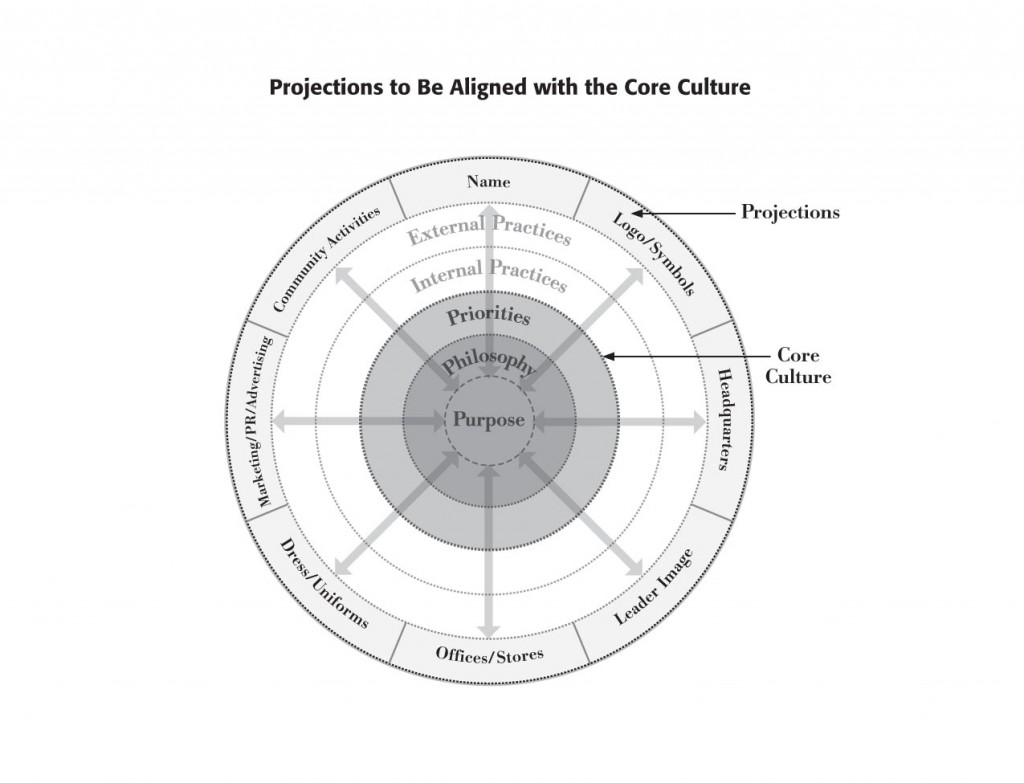
Conduct an Alignment Audit and implement an Alignment Plan
Firstly, you must have a clearly defined Core Culture. Next, the process for driving organizational change is to conduct an Alignment Audit.
Conduct an Alignment Audit
Managing Core Culture requires audits to evaluate the alignment of Practices and Projections with the Core Culture.
The Building a Culture of Distinction program provides the questions to guide your audit so that you can create a plan for change.
Create an Alignment Plan
After you complete the Core Culture Alignment Audit, you then create a plan. To sum up, the plan illustrates actions to improve those areas that are not sufficiently aligned with the Core Culture. Therefore, your goal is to develop a plan that will remedy the gaps identified in the audit process.
- Firstly, for each Practice and Projection category, review audit scores and recommendations.
- Then, develop objectives to enhance alignment.
- In addition, for the objectives, list the tactics that will accomplish the objective.
- And provide details for the tactics–such as timeframe/due date for completing the tactic, the person(s) responsible and the resources needed.
A key component of the planning process is to create measures to monitor organizational alignment. Above all, these measures will help you gauge if your actions are making the organization more successful in expressing the Core Culture principles.
When the Core Culture Alignment Plan is complete, you are ready to implement it. To sum up, the goal is to get better at living the Core Culture principles. Consequently, if you are succeeding at meeting this goal, future alignment audits will indicate your organization’s actions are more aligned with the Core Culture. Use the metrics you have established to judge how successful the organization is during this process.
Contact Sheila to guide you in driving organizational change
Contact Sheila to facilitate the process. Her firm Workplace Culture Institute is based in Atlanta, serving clients globally. Use the Contact Form to email Sheila.